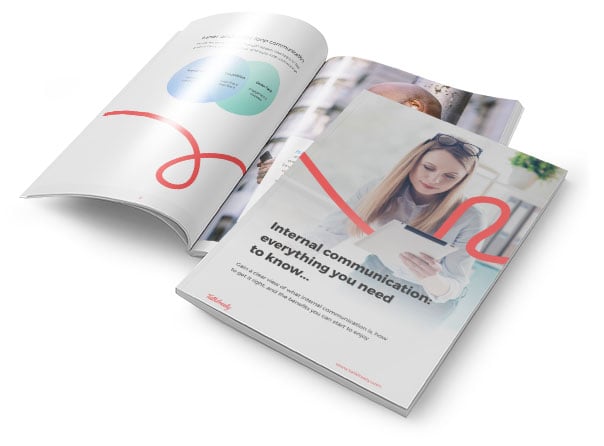As a business owner, your most valuable resource isn’t your office space, customer relationship management system, or annual Christmas party. It’s your employees; the people who keep things running and drive your organisation forward.
Yet, it’s becoming increasingly difficult to retain top talent. Recent research claims that 77% of UK employers experience high turnover rates. And, as you’re probably aware, replacing employees is a costly and time-consuming process.
What’s the solution to this problem? Choosing employee engagement ideas that work for your organisation.
Studies have uncovered a revealing link between employee engagement and superior retention rates. With that in mind, in this article, we examine the 7 chief reasons for this trend.
Exploring the Relationship Between Employee Engagement and Retention
#1 Aligning Employees with Company Culture
One of the first things employees consider when applying for a job is company culture. Unsurprisingly, this makes it an essential component in retaining them.
However, to effectively align employees with your company culture, they need to be engaged and have a firm understanding of your company values
This goes beyond the simple dissemination of company updates, objectives, and quarterly sales figures. It’s about providing support — both personally and professionally. Everything from counselling sessions and flexible working hours, to an employee feedback strategy that enables staff to submit culture-related requests; employees not only appreciate but value such initiatives.
Policies like this demonstrate the fact that you view your people as more than just another company asset, but as individuals.
#2 Defining Roles
Employee engagement means many things to many people, which is why we advise employers to come up with their own definition of the concept. Nevertheless, John MacLeod comes closer than most at finding a universal definition:
“(Employee engagement) is about how we create the conditions in which employees offer more of their capability and potential.”
While you might be tempted to dismiss this as nothing more than a catchy slogan, it really does hit the nail on the head.
Engaged employees have a clear understanding of their role within the organisation and, more importantly, how their efforts contribute to the organisation’s overall success. This increases productivity, as front-line workers know exactly what’s expected of them on a day-to-day basis. In other words, they're more capable of performing their duties and are more likely to fulfil their potential as a result.
What’s more, improving employee understanding reassures them that their personal goals match up with your wider business objectives. All of which makes employees feel valued, improving retention rates.
#3 Maintaining Morale
In the UK, the average working week is 39 hours long. Split over the 5-day period between Monday and Friday, this translates to roughly 8 hours a day — a significant portion of our free time. It’s therefore imperative that morale and job satisfaction remain high within your organisation.
Demoralised workers are less productive than their colleagues and unlikely to stick with your company for any length of time. High turnover rates drive down morale, and this can quickly escalate into an expensive and vicious cycle. When employees move on to pastures green, their coworkers have to do more work to pick up the slack, which causes stress and lower morale. The result? They are also more likely to leave too.
Keeping employees engaged has the opposite effect on morale. In addition to sharing important company news, such as sales milestones or client acquisitions, effective communication helps you keep people motivated during difficult times. An engaged workforce is a happy workforce.
#4 Collecting Feedback
To keep employees truly engaged, employers must actively encourage feedback with an ‘always-on’ approach to internal communication and employee engagement.
This should cover every aspect of working life, including personal performance, targets, job satisfaction, and morale. Listen to their thoughts on current company goals, business development plans, customer relations, and everything in between.
Rewarding employees for their hard work, in particular, can have a noticeable effect on turnover rates. Research has shown companies that welcome regular feedback as part of their employee listening strategy experience almost 15% lower turnover rates than those that don’t.
Information of this nature can be collected in several. ways, including pulse surveys and team meetings. The point is employees should feel comfortable offering their opinion and that it actually matters.
#5 Keeping Remote Workers in the Loop
There are over 1.5 million remote workers in the UK. And this number is only going to increase as digital technologies continue to disrupt the traditional workplace.
75% of remote workers believe they miss out on important information while they’re out of the office. So the challenge for employers is keeping these disparate employees engaged with day-to-day business operations.
Just as on-site employees like to be kept in the loop and included in work-based activities, so too do those working remotely. Otherwise, they feel undervalued by their employer, which increases the risk of remote workers becoming disillusioned with their professional life. Needless to say, it creates a risk that they'll seek employment elsewhere.
Fortunately, distributing important company information is far simpler in our technologically-advanced workplace.
A dedicated employee engagement app is particularly efficient, allowing you to consolidate information and distribute it from a single place.
#6 Forging Stronger Employer-Employee Bonds
“The customer comes first”. It’s an adage we’re all familiar with. Even so, a study conducted by Cornell University ILR School estimates that 80% of employee turnover results from poor relations between employer and employee.
To put it another way, failing to nurture relationships with your staff in the same way you do your clients can have a seriously detrimental effect on your efforts to retain top talent.
There are several reasons that help explain this correlation between the two. First and foremost, forging strong bonds with your employers inspires mutual trust. They know you’re looking out for them, consequently, they’re more likely to go the extra mile for your company.
Additionally, they feel comfortable asking for clarification on issues they may experience during the execution of their duties or enquiring as to the possibility of enrolling on a new training course. In a more general sense, it makes the working environment that much more welcoming and pleasant for everyone.
Naturally, employee engagement — facilitated by effective internal communication — is key to building such a rapport with your employees.
#7 Highlighting Opportunities for Career Development
The rise of the 'consumer employee' means that staff now demand bespoke and personal experiences from their employer. Workers place career progression and opportunities for personal development at the top of their list of priorities when deciding between potential employers. By almost twice as much as simple monetary benefits, according to a recent Deloitte study.
The result is that offering learning opportunities has become one of the key drivers of employee engagement.
Employees will be more willing to stay if they have easy access to relevant training opportunities throughout the term of their employment. If these development opportunities are restricted, due to inefficient internal communication and poor engagement levels, there’s every chance they’ll look for alternative employment with a company that can support them.
Promote Employee Engagement in Your Organisation
As far as the relationship between employee engagement and retention is concerned, the statistics say it all. Even industries with relatively high turnover rates report a 25% reduction as a direct result of implementing effective employee engagement techniques, according to the Harvard Business review.
Creating an engaged workforce, however, is easier said than done. It isn’t something that can be achieved in a single afternoon. It must be pursued, refined, and monitored relentlessly to ensure your efforts are producing the desired outcomes and have a genuinely positive impact on your workforce.
If you’d like to learn more about employee engagement download our guide: ‘Improve Employee Engagement in 7 Simple Steps’.
Topics:
Employee Engagement







